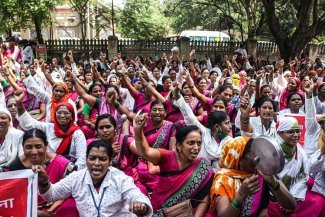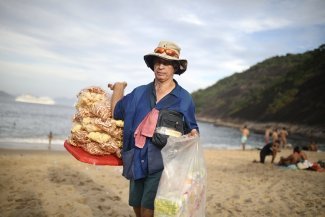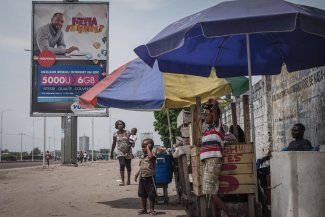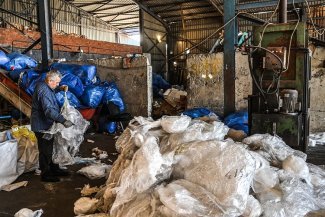South-east Asia is seeing a rapid deterioration of free press and freedom of expression. According to the 2018 Freedom in the World report from the Washington DC based non-profit Freedom House, seven of the eight south-east Asian countries (Cambodia, Indonesia, Laos, Myanmar, Philippines, Thailand, Malaysia and Singapore) have become less free in the last year. Reporters Without Borders’ (RSF) World Press Freedom Index reported similar findings, with every country in the region falling in the bottom third of its 2018 rankings.
“The situation in much of the region is deeply concerning,” said Tess Bacalla, executive director of the Southeast Asian Press Alliance, to Equal Times, highlighting several challenges including “the steep decline of press freedom...the rise of ethnic nationalism and the intensifying systematic crackdown on independent media amid concerted efforts by state and non-state actors alike to undermine the press and all other independent voices, such as those of civil society and human rights advocates.”
Also worrying to SEAPA and others is that as press freedom declines, disinformation is on the rise in the region, leaving newly connected citizens uninformed at a critical moment, as several countries, including Indonesia, Thailand and the Philippines, have elections in 2019.
This is not a new trend. Disinformation played a key role in several of the region’s biggest events over the past years. In Indonesia, disinformation played a key role in the stunning fall of Jakarta’s Christian Governor, Basuki ‘Ahok’ Tjahaja Purnama, in his re-election bid in early 2017. In the Philippines, which has seen the biggest regression of human rights, the government of President Rodrigo Duterte has used a massive ‘troll army’ to harass opponents and intimidate both civil society and the media.
And in Myanmar, it is now widely accepted that disinformation was a key driver of widespread, army-driven violence against the minority Rohingya, who are mostly Muslim. Recent reports have exposed the role of the social media platform Facebook in both allowing for disinformation to spread – and failing to respond when local organisations brought this to the company’s attention.
“In Myanmar military officials were thought to be behind systematic cyber-attacks that many feared fuelled the Rohingya crisis,” said Bacalla.
The problem is that, rather than addressing this threat, governments across the region are either complacent, or using the state apparatus to further control information. In the Philippines, the same ‘troll army’ that brought Duterte to power is now being used to censor and suppress the opposition, including the media. Cambodia essentially eliminated the country’s independent media ahead of its elections last year, in which the ruling Cambodian People’s Party won every single seat. And in Thailand, there has been a marked increase in the use of the lèse-majesté law, which criminalises speech that defames the royal family in any way, to muzzle journalists.
According to Daniel Bastard, head of the Asia-Pacific desk at RSF, the effect has been to essentially shut down free press as journalists are worried of covering anything the Thai military junta deems worrisome. “The junta has achieved its goal to promote self-censorship,” said Bastard to Equal Times. “Press freedom is already very weak after...years of attacks against the free press.”
Social media: a key battleground
SEAPA, RSF, and others are concerned that 2019 might see the situation get even worse. The region’s two largest democracies, Indonesia and the Philippines, will see elections in April and May respectively, as will Thailand in February, though it is unsure how free or open they will be. The key battlefront in south-east Asia is social media. Governments are already looking to expand their ability to control digital content – sometimes using disinformation or so-called ‘fake news’ as a guise.
“In the region, there is a pattern of trying to pass cybersecurity laws or fake news laws just before elections, like in Malaysia last year,” said Bastard. “It’s not a good sign.”
This is already happening. Thailand is debating a cybersecurity law that would vastly increase its ability to monitor state content, Indonesia is setting up a government-run ‘fake news’ war room, and the Philippines is now targeting Maria Ressa, the editor-in-chief of the independent news outlet the Rappler, who is being charged with tax evasion in what many see as a blatant attempt to silence dissent. Since Duterte came to power in June 2016, the Rappler has been a vocal critic of his controversial ‘war on drugs’ which has resulted in thousands of extrajudicial killings.
“There’s certainly no dearth of examples to show how states are manipulating or distorting online information – while criminalising and silencing critical voices – for their own ends,” said Bacalla.
This is one reason that Time magazine choose to highlight Ressa and other South-east Asian journalists – Myanmar’s Wa Lone and Kyaw Soe Oo, who were jailed for their reporting on the killing of 10 Rohingya Muslim villagers – as (co) Person(s) of the Year.
There are efforts to combat disinformation in places like Indonesia, where journalists and media non-profits decided to try to do something to prevent disinformation from impacting the coming elections. Last year, 22 well-known and respected media outlets launched a project called CekFacta, which aims to provide collaborative fact-checking and verification in a bid to counter disinformation, and create a trustworthy news portal for Indonesians. The challenge will be distribution in a country with over 260 million people spread out across more than 10,000 islands. In fact, there are – according to the Indonesian Association for Media Development – over 40,000 media outlets in the country, many of which are of questionable origins and often the source of viral disinformation.
“Although we can tackle disinformation quite effectively, the real challenge is to deliver our debunked articles to the origin of the hoax and to the people already affected or influenced by it,” said Wahyu Dhyatmika, editor for Tempo Media Group (publishers of Tempo Magazine, Tempo Digital and the Tempo Newspaper) to Equal Times, one of the leading media outlets in CekFacta. “We are trying to expand and cooperate with online media in those areas where hoaxes spread the fastest, so that we can have people on the ground who can alert us of any potential bad development.”
It will be a big task. CekFacta and its non-profit partner, Mafindo, are already facing capacity challenges despite the election being just over two months away. Without assistance from the government or platforms like Google, Facebook and Twitter, which are the main conveyors of information in the region, their impact is uncertain. That is true across the region.
“In a regional conference on disinformation organised by SEAPA in September, a consensus emerged among the participants from different parts of the region [that] fact-checking is not enough to halt the spread of misinformation and disinformation,” said Bacalla.
With few effective countermeasures and government power expanding, many expect that 2019, partly due to the coming elections, will see even more disinformation in south-east Asia than 2018









